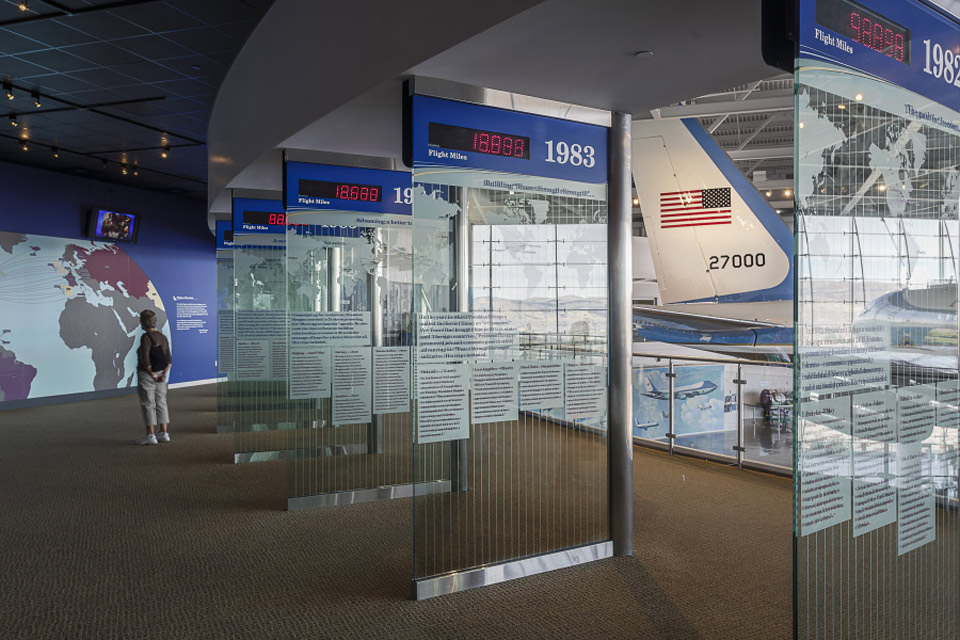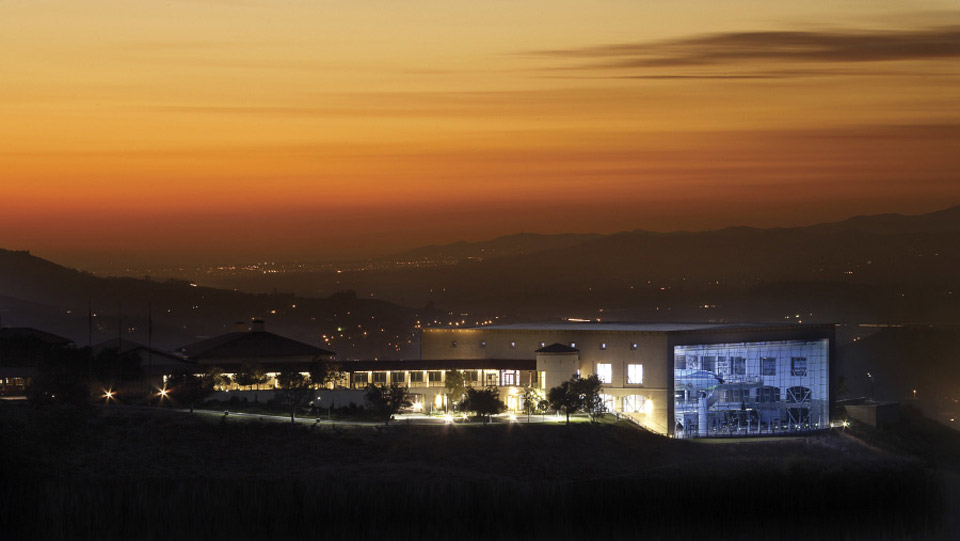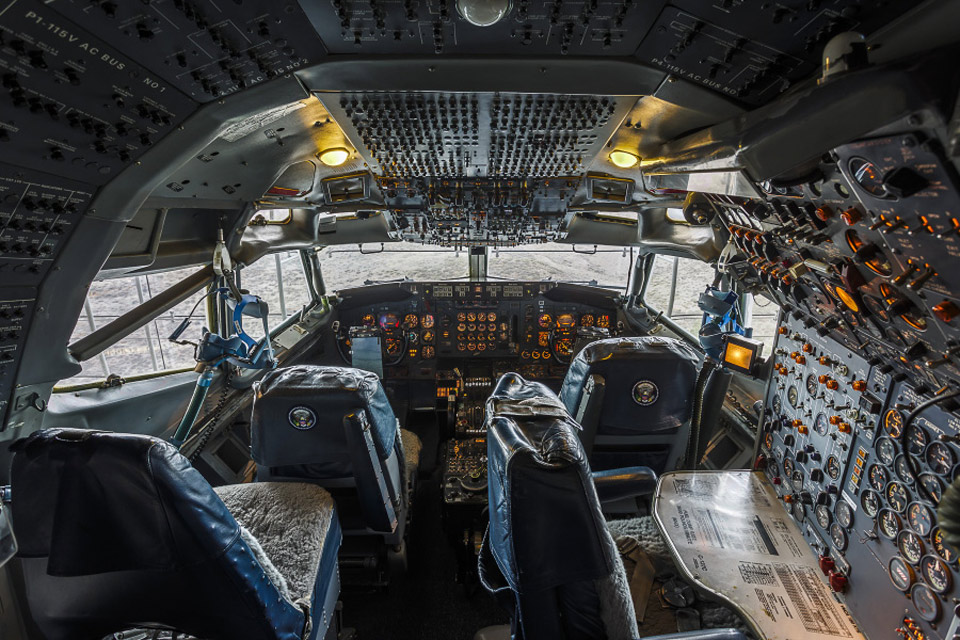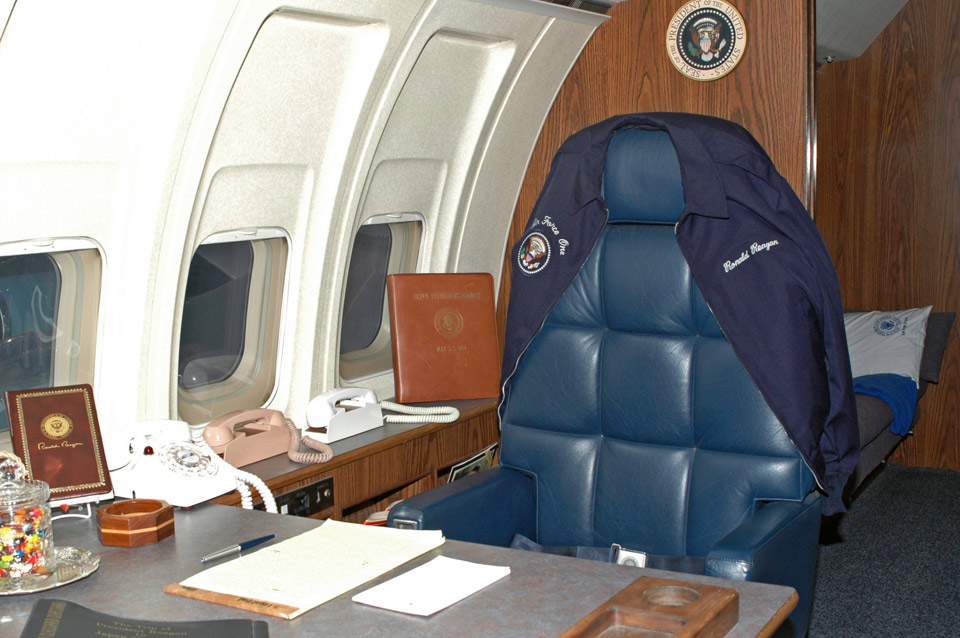Affecting the course of history
How SAM 27000—Air Force One—landed on a California mountaintop
During the John F. Kennedy administration in 1962, Boeing delivered the first of two customized Boeing 707-353Bs to the United States Air Force. It was officially designated by the Air Force as a VC–137C and given the call sign SAM 26000. (SAM is the acronym for Special Air Mission, and 26000 was the airplane’s tail number.)
Raymond Loewy, a famed industrial designer, had worked with First Lady Jacqueline Kennedy to develop the now-familiar blue-and-white livery associated with presidential airplanes.
An Air Force aircraft may use the call sign “Air Force One” only when a sitting president is on board. This call sign was created after a potential traffic conflict and confusion in 1953 between President Dwight D. Eisenhower’s Lockheed 749 Constellation, Columbine II, and an Eastern Air Lines flight having a similar call sign. When the vice president is on board, the call sign is Air Force Two. (The president and vice president may not fly aboard the same aircraft at the same time.)
The Secret Service regarded “Air Force One” as a code name that was not to be used publicly. President Kennedy, however, liked the name so much that he told his staff and the White House press corps to use it. It was not long before SAM 26000 and its sister ship, SAM 27000, became two of the most important and recognizable airplanes in U.S. history.
SAM 26000 carried President Kennedy to Dallas, where he was assassinated on November 22, 1963. It was aboard this airplane that Vice President Lyndon B. Johnson was sworn in as the new president. SAM 26000 then returned Kennedy’s body and the new president to Washington, D.C.
This aircraft was dubbed The Spirit of ’76 by President Richard M. Nixon and is now on display at the National Museum of the United States Air Force at Wright-Patterson Air Force Base near Dayton, Ohio.
The second presidential VC–137C, SAM 27000, was accepted by the Air Force in 1972 and eventually dubbed The Spirit of American Democracy. It was first used by Nixon and then by all subsequent presidents up to and including President George W. Bush. It was the last of the Boeing 707s used in presidential service.
Like its sister ship, SAM 27000 carried 52 passengers—including some obviously very famous ones—plus a crew of 18. (In airline configuration, that model 707 carried as many as 189 passengers.) It cruised at Mach 0.85 (typically 480 knots), carried 23,000 gallons of fuel, had a range of 6,650 nautical miles, and was powered by four 18,000-pound-thrust Pratt & Whitney JT3D turbofan engines. Maximum allowable takeoff weight was 327,000 pounds. Unlike the presidential Boeing 747 that entered service in 1990, the VC–137C did not have in-flight refueling capability.
A fascinating piece of trivia involving SAM 27000 is that it made a total of 1,440 takeoffs as Air Force One but landed only 1,439 times. In other words, it departed more times than it arrived. This anomaly occurred on August 8, 1974, when Air Force One departed Andrews Air Force Base for Southern California with President Nixon aboard. It was during this flight that Nixon’s resignation took effect. Remember Watergate? At the same time, Gerald R. Ford was sworn in as the new president. At that moment, the call sign of the airplane had to revert from Air Force One to SAM 27000.
During its 28 years of service, the airplane carried more presidents (seven) to more countries, for more meetings, and on more missions (445) than any aircraft in history. And no luggage was ever lost.
SAM 27000’s replacement, a customized Boeing 747-200, was ordered during Ronald Reagan’s administration but would not be received until 1990 (during George H.W. Bush’s administration). Believing that SAM 27000 would be retired when the 747 entered service, Reagan inquired about the possibility of bringing the airplane to the Reagan Presidential Library in Simi Valley, California—a dream that eventually became a reality. This seems an appropriate home for SAM 27000 because Reagan used it significantly more than any other president, and flew in it to more countries. (The two presidential Boeing 747s are VC–25As, SAM 28000 and SAM 29000.)
SAM 27000 made its final flight on September 8, 2001, from Andrews Air Force Base to San Bernardino International Airport (formerly Norton Air Force Base) in Southern California. There it was eventually disassembled into major components during a nine-week period by a crew from Boeing. It ultimately began its final journey in the middle of the night on June 21, 2003, atop a huge, specially designed trailer. It left the airport, crawling slowly along the streets of San Bernardino, the California Highway Patrol leading the way and in trail. Flashing lights atop the many patrol cars attracted considerable attention, as did the large words “United States of America” emblazoned on the fuselage. Patrons from a local bar ran onto the sidewalk, not believing what they were seeing. A few stood at attention and saluted as this outsized symbol of American sovereignty and influence trundled by.
Ahead were 102 miles of roadways and freeways. The most challenging aspect of SAM 27000’s final journey was negotiating the narrow and serpentine two-lane mountain road leading up to the library. No one had ever imagined that this road would have to accommodate a 153-foot-long fuselage.
On September 20 of the following year, SAM 27000 was finally towed into the partially built Air Force One Pavilion. As the remaining walls were built around the aircraft, the Boeing crew reassembled the aircraft in 10 weeks. It was then hoisted onto three 25-foot-high, seismically isolated pedestals. The airplane is canted in a two-degree nose-high attitude, giving it the appearance of being poised for flight. It heads toward open sky clearly beckoning from the other side of a huge 60-by-180-foot window that serves as the northeast wall of the pavilion. The final task of painting and polishing the airplane to a pristine condition took five months and was completed in time for the unveiling of Air Force One on September 23, 2005. The pavilion was dedicated on October 21, 2005, and open to the public three days later. The airplane looks as though it has just rolled off a Boeing production line.
SAM 27000 is the property of the Air Force but is on permanent loan to the Reagan Presidential Library, by far the most visited of all presidential libraries. Guests usually approach the Air Force One Pavilion by walking down a long hallway from the main library building. You can see something metallic at the end of the hall, but this in no way prepares you for the burst of visual stimulation you experience upon suddenly finding yourself at eye level with the starboard wing tip, up close and personal with one of the most famous airplanes in the world. The stunning airplane fills your field of vision, and you can appreciate why the Boeing 707 is generally regarded as the best-proportioned airliner ever produced.
Adding immensely to the Air Force One experience is that you are allowed to walk through the entire cabin. As you enter the forward passenger door, you cannot avoid realizing that you are stepping into a national treasure. The cockpit is to the left, of course, and studying it might cause you to recognize that there is little difference between it and the typical Boeing 707-320B Intercontinental used by so many of the world’s airlines. Most of the avionics and instrumentation are conventional. (As a retired TWA pilot, I am proud to say that the crews who flew these VC–137Cs received their initial and recurrent Boeing 707 training at the TWA Training Center in Kansas City, Missouri.)
Walking rearward you pass first through the global communications center that enabled the president to communicate with anyone, from anywhere. This is where all of the airplane’s esoteric “black boxes” are located (and there are a lot of them).
You then pass through the president’s office and conference area, where it is almost impossible not to pause and ponder. Reagan’s presidential windbreaker is casually draped over the back of his seat, and there is a jar of jelly beans on the table. Everything is just the way it was on June 12, 1987, when Reagan flew to Berlin and put the finishing touches on a speech that included the words, “Mr. Gorbachev, tear down this wall,” essentially heralding the end of the Cold War.
A library docent at the airplane, Everett “Lum” Edwards, says that it is not unusual for visitors passing through Air Force One to shed a tear as they softly touch Reagan’s seat or his jacket. “It has something to do with what once was,” he told me. The sense of history captured in the fuselage of this airplane is almost palpable. You find yourself moving slowly, not wanting to leave.
Continuing aft you pass by the 24-hour galley and the accommodations for guests, staff, and press corps. You exit through the aft passenger door near the tail.
In the book, Air Force One: The Final Mission, author Michael Broggie wrote, “Many who met Ronald Reagan described him as being ‘larger than life.’ This assessment could be made of SAM 27000, particularly when viewed inside the Air Force One Pavilion. That the two ended their journeys at the same place is symbolic of the bond that existed between this man and this machine. Each was dependent on the other to rise to their fullest potential; and in the process, they affected the course of history.”
Web: www.barryschiff.com









